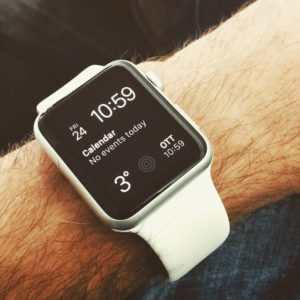Advertising on Mobile & Smart Wearables
Essentially, brands need to get personal with their target audience. People are becoming less and less enthused by the consistent lack of tailored ads and notifications that are sent or appear on their device, which do not reflect their personal interests. Otherwise, users will continue to become bored and indifferent to irrelevant ads, notifications and the sheer amount of information that they receive within a digital world that is online 24/7. And ultimately as consumers, do we not have a right to be choosy? It’s arguable that positioning wearables as another advertising platform is not worth pursuing due to the lack of space brands will have to advertise, yet this is where push notifications come into play because they can, if implemented correctly, provide valuable information to consumers and still be a great method to grab people’s attention.
Social platforms are already looking at ways to ensure that ads are targeted to the correct audience. For example, Instagram has said that they will be working with their advertisers ‘to reach people on Instagram based on demographics and interests, as well as information businesses have about their own customers.’ They will also be introducing ‘direct response ads’ which include action buttons to allow viewers to buy, install or sign up to offers advertised within the app. The addition of these action buttons also allows for the user to interact with advertisers as they please. As to whether the expansion of ads on Instagram will have a negative effect on the app is hard to say, as long as advertisers stick to the foundations of how and why the Instagram audience, predominantly teens and young adults, use and love the app (as detailed here), whilst blending in with great aesthetic content that will appeal to them. A recent study by Facebook IQ has also revealed that ‘68% of Instagrammers ages 13–24 say they interact with brands regularly, be it by looking at photos, liking content, following a brand, visiting its website or engaging in some other way,’ further indicating that Instagram is a great platform for brands to interact with their audience.
It’s an exciting yet challenging time for Marketers who will need to re-think the way that that data is delivered to mobiles devices, as well as the differences in screen real estate, particularly for wearables. In particular, I’m excited to see how the advances in technology, such as the smart watch, will impact the digital advertising space and what this means for brands in the future.




